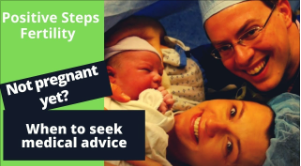The Alabama Supreme Court’s recent decision to legally recognize IVF embryos as children is uniquely transforming laws and lives in a dangerous way. Given the fragile nature of embryos—many of which stand no chance of resulting in a successful pregnancy—this ruling risks criminalizing the biological realities of IVF. In the past week, three-quarters of Alabama IVF programs have stopped procedures for creating or handling embryos. This decision begs the question: What happens to those who need IVF?
Why the Alabama Supreme Court Decision is so Cruel
The LePage vs CRM case, stemming from a tragic incident at the Center for Reproductive Medicine in Mobile, Alabama, has broader implications than many realize. By expanding the definition of a child to include embryonic cells, the ruling has already torpedoed IVF in Alabama. This not only limits access to the most effective fertility treatments but also creates a socio-economic divide in family building, leaving countless individuals facing the prospect of a childless future.
Why Do People Need IVF?
Ask any woman who has gone through IVF. It is hard, and no one does it for fun. There are shots, long trips, meaningful expenses, and more. Yet it can all be worth it in the end to get the child of your dreams.
IVF is done because sperm and eggs have complicated DNA or have difficulty meeting. It can also be done because the uterus is less receptive, or there are other reasons for miscarriages. If women continue to try the “old-fashioned way” when IVF might help create a healthy pregnancy, they might scar the uterus in a way that would later prevent normal embryos from attaching. For many women, the struggle of infertility can bring them to a breaking point due to the constant ups and downs, losses, and negative test results. But many keep going because that baby in your arms means more than anything else. When biology already poses unfair barriers to fertility, quite frankly, having legislators or judges make it even harder is cruel.
The Inaccuracy of the Alabama Embryo Ruling
The Alabama IVF ruling is not rooted in science, nor is it rooted in common sense. According to the Alabama Supreme Court, an embryo that has been frozen and not yet implanted in a uterus is the legal equivalent of one that has been implanted or already born. However, not only do many embryos not attach in the uterus (though more do after IVF than spontaneously), but this gives rights and status to embryos with genetic abnormalities that could never result in a successful pregnancy.
There are other factors that the judges involved with this decision seem not to have accounted for. If a couple is trying to conceive using natural fertility for years, but there isn’t a successful pregnancy, all of those embryos are being destroyed by the body. What is the legal status of these embryos under the new provisions from the Alaba ma embryo ruling? Would an overweight, diabetic, or hypertensive woman go to jail for manslaughter because a pregnancy miscarried since health factors she could arguably treat contributed to the loss?
People talk about the limits of IVF and embryology, but no one talks about how per fertilized egg (insemination vs IVF), embryos have a 3-4x better chance with IVF than conception within the body through insemination. Anyone who truly cares about fertilized eggs should acknowledge that IVF better protects embryos than spontaneous conception. After all, if the “old-fashioned way” were more effective in getting results, nobody would do IVF.
The Complex Medical Reality of Embryos in IVF
Reflecting on the Dobbs v. Jackson decision, which overturned Roe v. Wade, the issues surrounding “personhood” legislation and its definition of life commencing at fertilization become increasingly relevant. The biological intricacies involved in fertility treatments underscore the impracticality and insensitivity of uniformly applying “personhood” to embryos, particularly within the IVF context. The reality is stark:
- Many eggs fail to fertilize.
- Many embryos do not progress.
- Many are chromosomally abnormal.
- Many embryos fail to implant.
The Social and Economic Impact of the Embryo Ruling
Equating 150-200 embryonic cells (which have no brain, a heart, or even any certainty that it will attach to a uterus) to a child has incredible downstream implications. It means that many Alabama clinicians will have to stop IVF, which is the most powerful fertility treatment for many women. Why? Because if any treatment outcome is less than ideal, they could be charged with the wrongful death of a minor.
It means many women will have to travel hundreds of miles or more for care. It results in family, the most essential building block of our country, to disintegrate into a two-tiered system where only the rich who can afford the added time, travel, and costs, can overcome harder fertility challenges. So many women and couples who want to have children may never make it to the other side, and instead forever return to an empty home.
Ultimately, both the defendants and the plaintiffs, in this case, believe that IVF can help result in wonderful children. The cruelty of the decision is that neither side wanted the Alabama Supreme Court to take IVF away. Yet the hijacking of the case for a broader agenda means far more women will suffer as a result.
A United Call to Action
This ruling is scary and frustrating, but it’s reassuring to know we aren’t alone in fighting for reproductive rights and justice. I’ve had the honor of being involved with the American Society for Reproductive Medicine for nearly twenty years, a leading group for fertility specialists in the United States. Additionally, Doctors for Fertility, where I serve on the advisory board, is particularly close to my heart. Established in response to the Dobbs decision, its mission is crucial—protecting fertility access in an environment that’s becoming increasingly hostile to reproductive rights.
RESOLVE stands out as an exceptional, patient-led organization dedicated to advancing fertility issues, with its Fight for Families arm doing critical advocacy work. Not to be overlooked, the American College of Obstetrics and Gynecology has been instrumental in leading numerous aspects of reproductive rights and care.
These organizations lead the way in safeguarding reproductive access. Supporting them is not just an act of unity but helps ensure that anyone who wishes to build a family can do so, free from undue legal or political barriers.
It is crucial to note that we should not condemn all of Alabama for one court’s decision. There are so many wonderful women and couples in Alabama, and we wish the state’s supreme court better reflected the people’s will on both sides of the case and beyond to those who need IVF to realize their dream of creating a family.
Ultimately, we’re all in this together. Every one of us, if not personally touched by fertility challenges, at least knows a child who wouldn’t exist if not for IVF (~3% of US children.) Let’s make sure all those who want to be parents have hope, have options and ultimately have the best chance for children.




